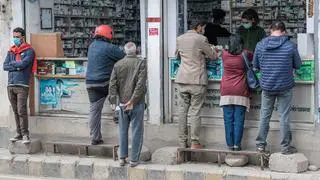Over the last several years, many a vision statement projected a robust trajectory for the pharmaceutical industry by the year 2020. The widely accepted projections held out by representatives of the Indian government and industry pegged the pharmaceutical segment at $55 billion by 2020. It is 2020. But is the industry there yet?
An earlier international report by PwC had used the iconic Dickensian line, “It was the best of the times, it was the worst of times”, to describe the global pharmaceutical landscape fraught with challenges and opportunities.
The same could be said of the Indian pharmaceutical arena, with the last decade seeing some defining cases on the patent regulatory pathway in the early years, for instance. But as the decade ended, discussions around a country’s right to use a compulsory licence (CL), for example, continue to raise the temperature on both sides of the pharmaceutical divide, some saying the provision is used too little and others claiming exactly the opposite. A CL allows a country to get a third manufacturer to make an innovative drug at a reduced price and on payment of royalty, in the larger public interest.
The decade closes with the pharma industry doing better than other sections of the domestic economy, with growth hovering at about 10 odd per cent — but several notches less than its projected rate of 15-20 per cent. Industry estimates peg revenues at about ₹2.6 lakh crore, divided equally between domestic sale and exports.
PwC India Partner Sujay Shetty observes that the growth has been there. But factors like consolidation in the US market and competition in the generic segment have inhibited growth. Companies have reduced the number of new drug applications to this market and begun to focus on speciality products to bring in efficiencies and get an edge, he explains.
In the domestic scenario, the increasing basket of products under price control and the crackdown on fixed-dose-combinations (FDCs), demonetisation, etc, have contributed to disruptions. And finally, the rupee depreciation also impacted business projections in dollar terms, he says. But Sujay is optimistic about the future, with digitisation expected to play a larger role in the industry and in improving access. Existing government programmes like Ayushman Bharat for health insurance and Jan Aushadhi for less expensive generic drugs will also help the market expand.
Dilemma of health
S Srinivasan of LOCOST (a producer of less expensive drugs) points to the eternal dilemma involving the business health of the pharmaceutical industry, as compared to the health of the people. The segment is doing rather well, despite the economic gloom, he observes. “But the question is whether industry is making the right drugs that are needed by people and are they affordable,” he poses. No breakthrough innovation is coming out of Government labs and the new drugs from multinationals are expensive, he says. There are attempts to partner with local companies through licensing schemes, but can that be a sustainable way forward?
Policy initiatives continue to “waffle” over the uniform marketing code of medicines, for instance, and uncertainty continues over the FDC issue, he points out. Srinivasan calls for an innovative spur from the Government to universities and an increase in science budgets to bring in more affordable medical solutions.
Industry representatives are also concerned over the revision of the National List of Essential Medicines by the Government. Some worry over the expanding list of medicines that would be brought under price control, while health workers caution over watering down the criteria on which the list is prepared. Quality will be the other feature that drugmakers will have to keep at the top of the priority list, to keep their credibility from eroding.
In its report, “India Pharma 2020”, McKinsey & Company had projected for $55 billion, with the potential to achieve $70 billion. But it had also thrown in a caveat. “In a pessimistic scenario characterised by regulatory controls and economic slowdown, the market will be depressed and is expected to reach USD 35 billion.”
As the pharma industry continues to evolve under the stringent watch of regulators across the world, Indian drugmakers will have a particularly tight rope to walk between bringing out differentiated, quality medicine and keeping it affordable.
But will it achieve the projected potential of $70 billion in the next few years? That’s a question to which few want to wager an answer, at this point in time.








Comments
Comments have to be in English, and in full sentences. They cannot be abusive or personal. Please abide by our community guidelines for posting your comments.
We have migrated to a new commenting platform. If you are already a registered user of TheHindu Businessline and logged in, you may continue to engage with our articles. If you do not have an account please register and login to post comments. Users can access their older comments by logging into their accounts on Vuukle.